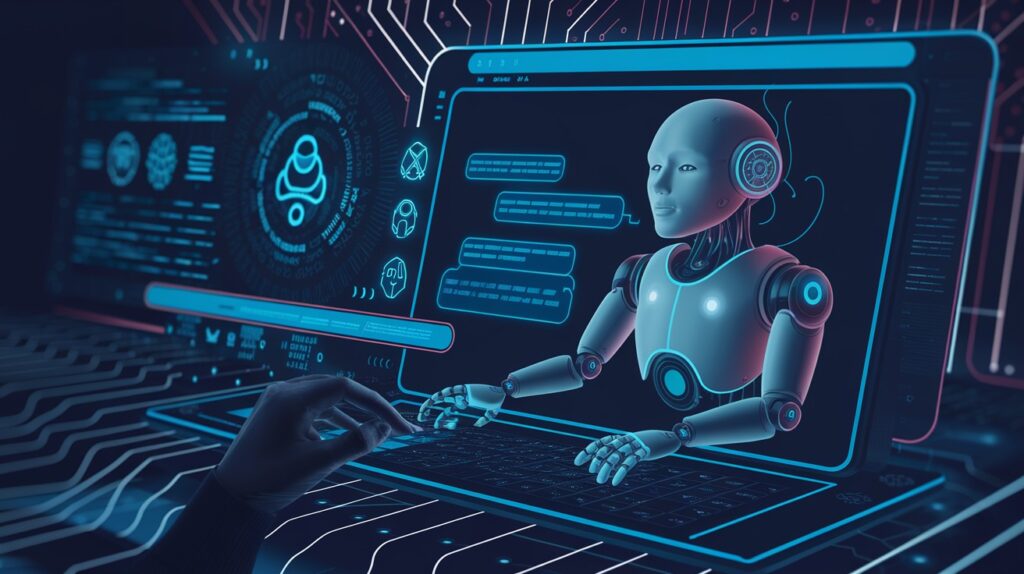I’ll create an engaging introduction for your blog about Perplexity AI vs Wikipedia, avoiding all the banned words and keeping it under 130 words in a conversational tone.
When searching for information online, two major options stand out: Perplexity AI and Wikipedia. These platforms work in fundamentally different ways to help you find what you need.
Perplexity AI functions as an AI assistant that pulls information from across the web, giving you answers in a chat format. It responds to your questions with current data and allows for follow-up questions.
Wikipedia, on the other hand, offers article-based knowledge built by thousands of contributors who follow strict guidelines for accuracy and neutrality.
So what makes each one useful? When should you turn to one over the other? This comparison breaks down their core differences, from how they gather information to when each might be your best choice.
Perplexity AI vs Wikipedia: What’s the Difference?
|
Aspect |
Perplexity AI |
Wikipedia |
|
Information Source & Generation |
Synthesizes from multiple web sources in real time |
Static articles edited and verified by the community |
|
Update Frequency |
Updates instantly with the latest web data |
Depends on user edits and moderation |
|
User Experience |
Chat-like interface with personalized interaction |
Article-style layout with hyperlink navigation |
|
Content Reliability |
Depends on the cited sources and AI interpretation |
Community oversight with citation rules |
|
Use Case Scenarios |
Great for summaries, quick answers, and follow-up queries |
Best for in-depth historical or encyclopedic knowledge |
What is Perplexity AI?

Perplexity AI is a search assistant that uses natural language processing to find and process information from across the internet.
Unlike traditional search engines, it presents results as conversational responses rather than a list of links.
This tool merges search engine technology with large language models to create human-like answers drawn from multiple online sources.
When you ask a question, Perplexity searches the web in seconds, analyzes various sources, and creates a concise response.
Key Features:
- Conversational answers
- Source citations
- Follow-up question capability
- Personalized recommendations (with Pro version)
Behind the scenes, Perplexity combines web search results with AI models similar to GPT to generate its responses. This integration allows it to understand complex questions and provide coherent, contextual answers based on current information found online.
What is Wikipedia?

Wikipedia is a community-driven online encyclopedia that anyone can edit.
Founded as a non-profit organization, it has grown into one of the most visited websites worldwide, offering free knowledge on countless topics.
At its core, Wikipedia operates through collaborative effort. Thousands of volunteers create, update, and monitor content according to specific guidelines.
The platform maintains quality through its commitment to neutral presentation of information and requirement for verifiable sources.
Key Features:
- Article-based format
- Hyperlinked references and citations
- Neutral point of view editorial guidelines
The system works through a transparent process where changes are tracked and discussed. Each article has a history page showing all edits and a talk page where contributors can discuss improvements. This structure creates a self-correcting ecosystem where inaccuracies are identified and fixed by the community.
Privacy and Data Usage
Perplexity AI’s Privacy Policies
Perplexity AI collects user queries as part of its service operation. When you ask questions, the system processes these requests to generate responses and may store them to improve its services.
For users with accounts, especially those with Pro subscriptions, the platform retains search history and uses this data to offer more tailored responses over time.
The service also employs cookies and similar technologies that track usage patterns across sessions.
While this helps create a more personalized experience, it means your interactions with the platform contribute to its data collection practices.
Wikipedia’s Data Practices
Wikipedia operates with minimal data collection for most users. You can read any article without creating an account or logging in, and the site doesn’t require personal information for basic access.
For those who choose to browse anonymously, Wikipedia collects limited technical data but doesn’t connect this to individual identities. Even when editing content, you can contribute using just a username without revealing personal details.
This approach reflects the platform’s commitment to free access to information with few barriers, though registered users will have some activity tracked for community moderation purposes.
Community and Ecosystem
- Wikipedia operates through worldwide volunteer networks
The platform functions thanks to thousands of unpaid editors across the globe who create, monitor, and improve content daily. This diverse community ranges from casual contributors to dedicated editors who spend years maintaining article quality and accuracy.
- Governance structure maintains Wikipedia standards
Wikipedia employs a multi-tiered system with administrators, arbitration committees, and foundation oversight. This structure helps resolve disputes, enforce content policies, and protect the platform from vandalism while maintaining its open-editing philosophy.
- WikiProjects coordinate specialized content development
These subject-focused groups bring together editors with expertise in specific fields like medicine, history, or technology. They establish quality standards, organize content improvement drives, and help ensure accurate information in their knowledge domains.
- Perplexity relies on technical feedback mechanisms
Rather than volunteer editors, Perplexity improves through algorithmic refinement and user interaction data. The system learns from search patterns, query reformulations, and direct feedback to enhance its response quality over time.
- Business partnerships extend Perplexity’s reach
The platform offers API access for developers and organizations to integrate its search capabilities into other applications. These connections create an ecosystem where Perplexity’s technology serves broader use cases beyond its main interface.
Pros and Cons
|
Platform |
Pros |
Cons |
|
Perplexity AI |
Fast, conversational, up-to-date |
May hallucinate or misinterpret info if sources are weak |
|
Wikipedia |
Well-researched and cited content |
Can be outdated or less responsive to breaking events |
How Each Platform Handles Accuracy and Bias?
1. Perplexity AI’s Approach to Accuracy
Perplexity AI approaches accuracy by pulling information directly from multiple external sources across the web.
Its system evaluates these sources and attempts to provide the most relevant information from what it considers reputable content. The platform uses artificial intelligence to analyze, select, and cite the information it presents in responses.
This method allows for quick access to a wide range of data, but makes the quality of answers dependent on the sources available online at the time of search.
2. Wikipedia’s Accuracy Mechanisms
Wikipedia maintains accuracy through a robust system of community oversight. Articles undergo editorial review from multiple contributors who can flag or correct problematic content.
Behind each article are discussion pages where editors debate changes and content decisions. The platform enforces strict policies on maintaining a neutral point of view and requires contributors to disclose potential conflicts of interest.
This multi-layered approach creates a self-correcting system, though the process can be slower than automated methods.
Offline and Accessibility Options
- Perplexity AI requires an internet connection
This platform functions entirely online, needing constant internet access to retrieve current information from web sources.
There is no offline functionality as the system must connect to both its AI models and search capabilities to generate responses.
- Wikipedia offers complete offline access solutions
Unlike its AI counterpart, Wikipedia provides full database dumps that can be downloaded and accessed without the internet.
These files contain entire collections of articles that remain available even when disconnected from networks.
- Mobile apps differ in offline capabilities
Perplexity’s mobile application needs continuous connectivity to function properly. In contrast, Wikipedia-based apps like Kiwix allow users to download selected content categories or language editions for later offline browsing.
- Accessibility for limited-connectivity regions
Wikipedia’s offline solutions make it valuable in regions with poor internet infrastructure or during connectivity disruptions. Perplexity cannot serve users in these situations due to its real-time search requirements.
- Data usage considerations
Perplexity continuously consumes data with each query and response. Wikipedia’s one-time downloads, while initially large, offer more economical long-term use in data-restricted environments.
Conclusion
When comparing Perplexity AI and Wikipedia, we see two distinct approaches to information sharing. Each platform serves different needs based on how you prefer to access knowledge.
Perplexity AI offers immediate, conversational answers pulled from current web sources, ideal when you need quick information or have follow-up questions.
Its AI-powered approach means constant updates but requires careful consideration of source quality.
Wikipedia provides thoroughly vetted content through community oversight, making it reliable for foundational knowledge. Its offline capabilities and editorial standards create stability, though updates may take longer to appear.
These platforms complement rather than compete with each other.
For fast answers about recent events, Perplexity AI excels. For comprehensive background information with facts, Wikipedia remains valuable. Understanding these differences helps you choose the right tool for your specific information needs.
Frequently Asked Questions
Who is Perplexity AI owned by?
Perplexity AI is owned by Perplexity Labs, Inc., founded in 2022 as a startup company based in San Francisco.
Why is Perplexity AI controversial?
Perplexity faces controversy over content scraping from websites without permission, potential copyright issues, and concerns about source attribution accuracy.
Who is the CEO of Perplexity AI?
Aravind Srinivas is the CEO and co-founder of Perplexity AI, previously a research scientist at OpenAI.








